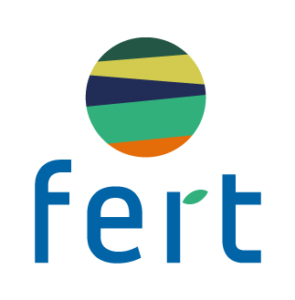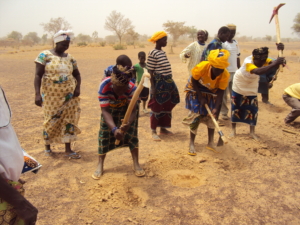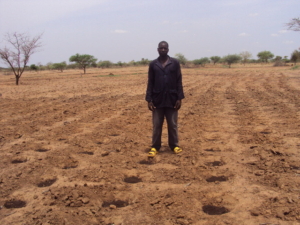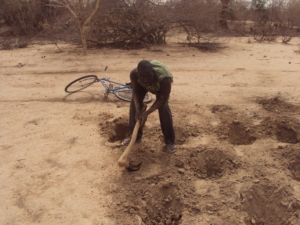The producers of the three cowpea Unions groups accompanied by Fert and Accir in Sanmatenga found a progressive depletion of land and questioning the sustainability of their production systems. At their request, actions to improve soil fertility have been implemented.
A study conducted in 2012 on methods of managing soil fertility , helped to identify and describe the various techniques of soil and water conservation (SWC) practiced by producers of cowpea unions. The field surveys have identified a total of 10 practice water conservation and soil:
- zaï ( special form of culture poquet to concentrate water and fertilizer in micro- dug daba staggered where the seeds will be planted ),
- the production of organic fertilizer,
- stone bunds,
- half- moons,
- transplanting andropogon (herbaceous plant that can reach a height of 1.50 m )
- spreading tree leaves,
- mulching,
- the earth bunds,
- picketing wood,
- tree plantations,
Training and local support, helped to disseminate the technical land reclamation at the 80 pilot producers trained.
This is mainly technical zai and halfpipe that involve the use of organic manure and the establishment of a stone bund upstream of the plot. Recall that these techniques help to restore degraded soils, reduce erosion caused by wind and rain , promote rainwater harvesting and finally allow producers to take advantage of the organic material they have (organic material from ruminant livestock operations and crop residues).




